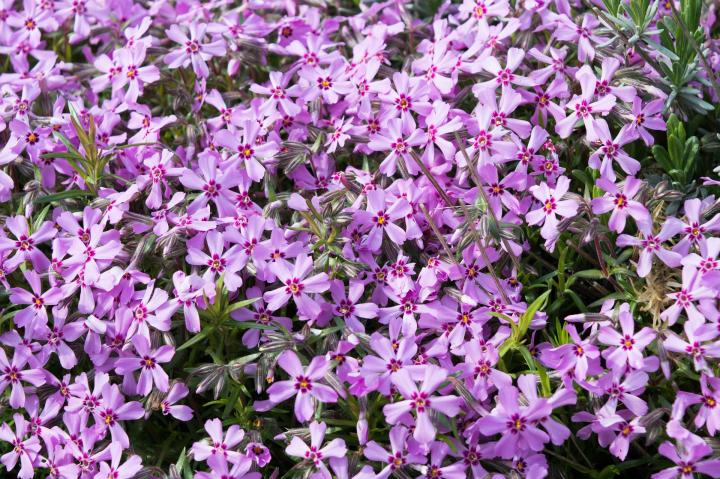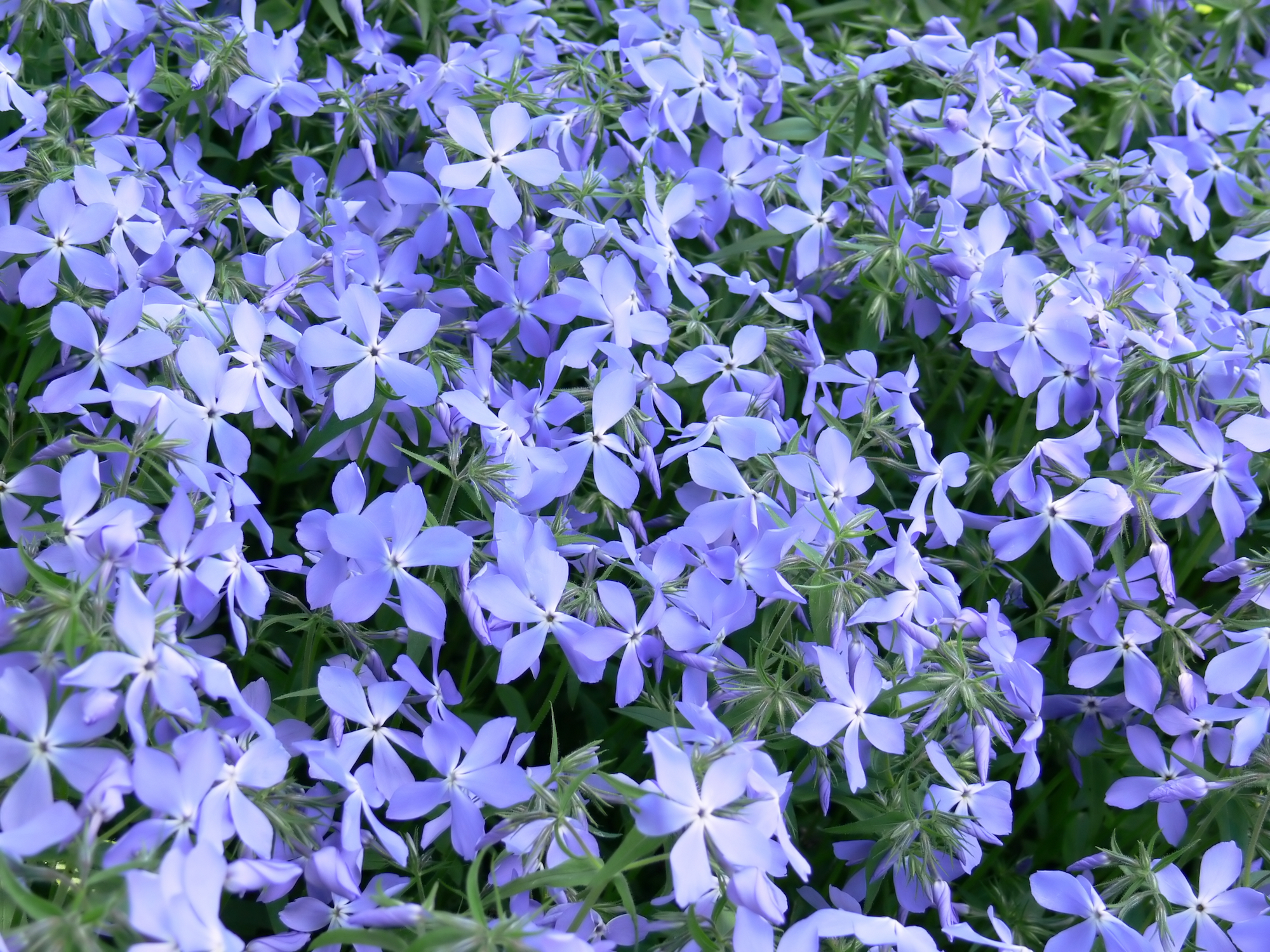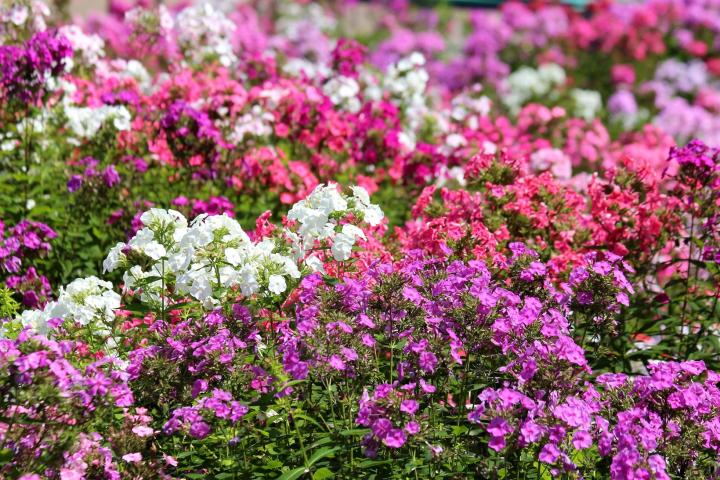
From Ground Covers to Garden Giants: Meet the Many Faces of Phlox
Read Next
Types
You just can’t go wrong with phlox! Here are some of the best species and varieties to try:
Low-Growing Phlox
- Creeping phlox or moss phlox (Phlox subulata) is a low-growing species that works excellently as a ground cover. It spreads slowly, growing in mounds that get 4–6 inches thick. The whole plant turns into a carpet of color in spring, when flowers cover every square inch of foliage. This phlox is particularly stunning when allowed to drape over a rock wall—imagine a waterfall of color! Creeping phlox grows best in well-draining soil and partial to full sun.
- ‘Candy Stripe’ is a popular variety with pink-and-white–striped flowers.
- ‘Emerald Blue’ produces a sea of lilac-blue flowers (perfect for that waterfall of color!).

- P. stolonifera, which also goes by the common names creeping phlox and moss phlox, is similar to P. subulata in name only. The main differences between it and P. subulata are that its leaves are oval-shaped (rather than needle-shaped), and its flowers are produced on stems that rise 6–10 inches above the foliage (rather than directly on the foliage). It prefers a shadier growing site with rich, evenly moist soil.
- ‘Sherwood Purple’ is a delicate little phlox with purplish-pink flowers.
- Woodland phlox or blue phlox (P. divaricata) is another low-growing species. As its two common names suggest, it prefers partial to full shade and moist, rich soils and produces bluish flowers in early spring. Like P. stolonifera, its flowers bloom on stems that rise about a foot or so above the creeping foliage.
- ‘Chattahoochee’ and ‘Blue Moon’ are two great varieties with beautiful blue-to-violet flowers.

Medium-Height Phlox
- Annual phlox or Drummond’s phlox (P. drummondii) grows as an annual rather than a perennial, unlike most other phlox species. Annual phlox rarely grows taller than 2 feet in height. Most varieties are not very heat tolerant, but in warmer regions, you may find the heat-tolerant varieties for sale. Plant in well-draining soil in a site that gets partial sun and doesn’t stay too wet.
Tall Phlox
- Garden phlox or summer phlox (P. paniculata) is the tallest phlox in cultivation and is probably the species that most folks have in their gardens. It grows in clumps that reach between 3 and 5 feet in height and produces panicles of flowers in mid- to late summer. Though tolerant of most lighting, it grows and flowers best in partial to full sun. It has a reputation for being very susceptible to powdery mildew, but resistant varieties are available.
- ‘David’ has bright white flowers and is resistant to powdery mildew.
- ‘Jeana’, another mildew-resistant variety, produces panicles of petite purplish flowers—similar in appearance to a butterfly bush.
Other Phlox
The phlox listed above are just a few of the many species out there. Others of interest to gardeners may be Carolina phlox (P. carolina), meadow phlox or spotted phlox (P. maculata), and sand phlox (P. bifida).
Gardening Products
You can still plant your phlox. It will likely grow new stems from the roots.
You can also try to root the broken stem. Shorten the stem to about 3 to 6 inches long with 2 to 6 leaf nodes. Cut the stem with a sharp knife at an angle just below a leaf node. Remove flowers, buds and lower leaves. Plant the cutting in a pot with equal parts moist coarse sand and vermiculite or perlite. Make sure the lowest leaf node just above the surface.
It's hard to tell what caused the plants to die. There are three common diseases of phlox. Oedema causes rusty blisters on leaves and petals. Parasitic nematodes (roundworms) turn foliage and stems brown and mottled. Powdery mildew creates a dusty white covering on leaves, stems and flowers.
I planted phlox [orange perfection and Neon] in March. Now it's May 30. I don't see any thing coming from ground. I got them from Costco and I live in Northern Virginia. I noticed that the lot we moved into has lot of clay. Is the phlox dead by now?
- « Previous
- 1
- 2
- …
- 10
- Next »










Comments